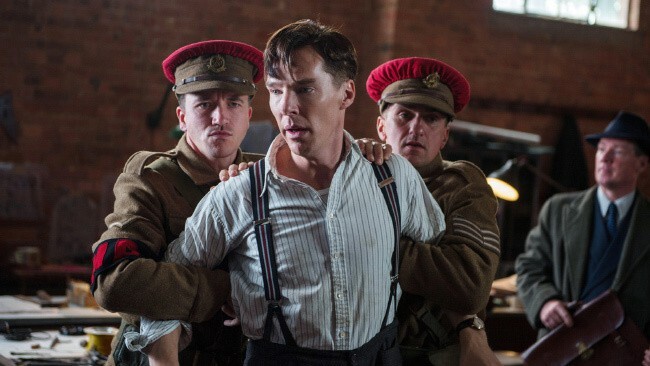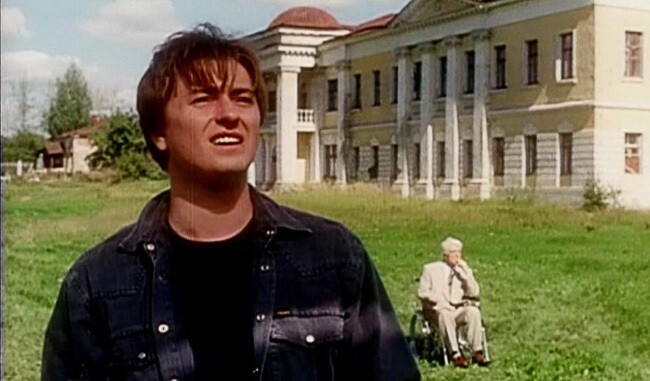Textiles - a key design element of any room. The main bedroom "semantic center" is the bed, because its design is given the greatest importance. Luxurious drape bed instantly transform an entire room. Create beautiful bedspread on the bed with his hands is a snap if you have the appropriate materials, tools, and enough patience.
Content
- The functional significance covered
- The choice of fabric
- select color
- model Selection
- Calculation of fabric consumption
-
manufacturing technology
- Patchwork
- puffed
- quilt
- spike
- crochet
-
Master Class - how to sew a quilt blanket with his hands
- The necessary tools, equipment
- Drawing patterns, cutting
- Sewing
- Decoration - design ideas covered
- How to sew a bedspread of old jeans
- conclusion
The functional significance covered
Blanket - not just decoration bed, but also very functional item. It protects linen from dust, dirt, abrasion, keeps it fresh. There are also blankets, rugs, serving both a protective drape bed and "day Blankets," by which sleep is not spreading a bed. The product makes the room comfortable, the situation itself - the "home".

Blankets of different models are used not only in the bedroom, but also for a sofa, chairs, located in the living room, hallway, kitchen and others.

The choice of fabric
Cloth covers the rest is adjusted for indoor decoration. The most commonly used:
- Wool - pure wool types of matter are expensive, are heavy. Because often used mixed - they are a little easier, easier to clean, decorated with colorful patterns;
- Acrylic - a bright, fluffy, light, practically no shrink. It dries quickly, is long, ideal for children's bedrooms;
- Tapestry - a dense, heavy, usually mottled. Not suitable for small beds, cramped rooms, look great in the "classic" living;
- velvet - a luxurious, expensive, but quickly abrade. Its use is appropriate, if the room there is one or two elements of velvet;
- bamboo, cotton - thin, lightweight, comfortable in terms of washing materials, which are often added to polyester. The best option for summer plaid;
- viscose - is cheap, is an artificial tissue, but many properties equivalent to the natural, after washing will shrink;
- silk - slim, sleek, well suited to the "eastern" interiors. The sun quickly fade, wash it by hand or in a delicate operation;
- artificial fur - looks elegant, is performed mainly of synthetic materials, strongly electrified, difficult to care;
- plush, fleece - used as blankets for babies as well as older girls and boys. Fabric very soft, but requires the most careful washing, shrinks, is sometimes used as a lining;
- sintepon - used to make quilts, coverlets solely as a lining.

Should any of the tenants with allergies, this factor is taken into account when choosing fabrics. If you have pets, young children, the most preferred non-marking materials.

select color
Well-chosen color and pattern on the bedspread will slightly adjust the shape of the room failed, to diversify it. Cold, dark colors are used in the spacious, well-lit rooms, with windows facing south-east, south. Lighter, warm perfect for small bedrooms, where the sun rarely penetrates and windows "turn" to the north, north-west.
Aimed in the right side of the strip can correct disproportionality of the room, but it is desirable to duplicate a print and on other elements of the situation. If the wallpaper, carpets, curtains, colorful, covering selected monotonous and vice versa. Sometimes bed hangings make the only color accent monochrome interior. Two-three-color models are most common, overly colorful fit only for such interiors as boho or east.

The most popular colors:
- purple-black;
- slate-gray;
- beige;
- terracotta;
- silver-brown;
- brilliant blue;
- mahagonevy;
- golden-orange;
- pale pink;
- rich brown;
- creamy white;
- chrome green;
- Orchid.

model Selection
Model blanket or bedspread on the bed is chosen based on the fact, in what style decorated bedroom interior, the design of the bed, upholstery and other furniture decor. Many pick a plaid curtains - this option is ideal for classical, gothic, antique interiors. And the curtains, furniture and draperies are made of the same material - tapestry, velvet, suede, and drawing on them duplicated.
See also:How to choose a blanket on the sofa

On the large double beds look beautiful model with the edges hanging down to the floor. From under heavy draperies often looks valance. Single bed adolescent boys is made more modest - the veil hides only bed. Such variants are suitable for the style of minimalism, hi-tech, Japanese. For a romantic interior girl's bedroom created a thin bract with ruffles, lace, ruffles, puffs.

Bedspread Cover tightly fits the upper part of the structure, its dimensions are matched by the size of the mattress, taking into account the fact that the latter will house linens, blanket. Sometimes such things sewn gum. It is ideal if the wooden parts of the bed "rich" texture carving, painting or box completely made of rattan.
When the cover is decorated with woodcarving similar duplicated element in the design of the dresser, armchairs, chairs. Brush, fringe, ruffles, beads, rhinestones, bows are usually placed along the contour of the product, so as not to interfere with sitting and lying on it.

Calculation of fabric consumption
Consumption of matter depends on the size bed, bed height, model specific draperies. For the most simple, square or rectangular embodiment measure the width, length, upper part, up to 1.5-2 cm tucking the edges 20-50 cm - hanging on edge. Bedspread on double bed is allowed to perform several cuts a narrow fabric, if the master does not confuse the seams are located in the most prominent places.
If your rug is planned multi-puffs folds, material consumption will increase by 20-40%. In the presence of overhangs, it will go a long, narrow the segment, usually cut to length. The calculation here is simple matter - is required to measure the perimeter of the top of the bed by adding from 50% to 150%, depending on the depth, number of folds. On the quilt, also need a little more tissue than smooth, made from a single piece of fabric. When needed "trimming" parts by drawing, the material to acquire a stock of 10-25%.
In a further inlay in the form of ruffles, bows, flowers textile require additional material. Its volume depends on the number of decorative elements, often used the fabric of a different color and texture.

manufacturing technology
Embodiments of the curtains, there are many. This patchwork, knitting, weaving. Item made of a single piece of fabric or a plurality of small pieces, it is possible to knit both of the thread and of the narrow textile ribbons. Braided, knitted products bring comfort to the room, the heat, they usually sewn thick lining that does not shine through.

Patchwork
Patchwork - patchwork, implying a very laborious work process, but surprises with its magnificence. The product to create a cozy atmosphere, transforming the room.
How to sew this thing step by step:
- initially thought over the subject of design, the shape of its parts;
- selected several different pieces of matter;
- cut parts - they are square, in the form of lozenges, triangles, hexagons, asymmetric elements of one or more colors;
- crosslinking is performed according to the scheme after preliminary bonding pins;
- after the front part of the product is desired to iron, to stitch the resulting fabric polyether fiber fleece, satin or other suitable material;
- further double layer blanket stitched to the backsheet;
- in the end it produced edging piping, the other in a similar way.






puffed
Pouffe - kind of folds, creases on the drapery. To sew a gorgeous product will need a lot of time and patience. Puffs are formed from clear lines traced on the fabric, stitch, which are then gently pulled together to form a pattern on the fabric bulk.
How to make a blanket puffed:
- suitable material is selected. It is best to look like patterns when made of silk, satin, the other shiny, smooth material which is easy to drape;
- further pick up pattern - there are a lot of options. This "florets", "pigtails", "braids", "Bamboo", etc .;
- calculation of the material here is very different. To verify the amount of a small piece of tissue is taken, it is filled with the selected pattern, calculate the size of the reduction factor;
- further prepared underlay and the upper fabric;
- is applied from the inside of puffs diagram on which the stitches are performed;
- puffs gently pulled together, face and lining fabric fold "face to face" edges worn down;
- the product is turned out. The edges are made ruffles, flounces, ruffles.
See also:Sculpture in a modern interior















quilt
Quilted bedspread will be a real "highlight" of the bedroom, it is original, unique. The ideal material for him - a silk or satin.
Working process:
- to determine the exact dimensions of the product measured the length, width, height of the bed, adding seam allowances and ruffles;
- than smaller figure is assumed, the more material is required. Usually enough extra 5-7 cm on each side;
- all necessary lines are scheduled long stitches line laid along them;
- when the finishing stitches should not get a "sag" fabric;
- the product collected at the edges of seams executed "in podgibku" Ruffles, bias binding, etc .;
- in the presence of frills, calculate the number of folds per unit length prisborennuyu strip sewn to the blanket, the sections are made using overlock.

spike
Subject associated spokes, coziness fills the room with warmth. This veil is done continuous or made up of separate pieces. The first option is created from wool or synthetic colored thread. Before the start of knitting is desirable to bind small sample by means of which it is determined how many loops have 1 or 10 cm. Selected pattern knitting a piece of size at least 10 to 10 cm, the measurement is carried out with a ruler. The approximate number of loops to double covers 450-500, the number of rows - 550-700.
The product collected from fragments of the same or different forms, looks most original, especially if colored items. For example, for the Baby Soft in the "checkerboard" need to dial 35-37 loops, tie about three dozen rows - the number depends on the density of breeding. If the size of the resulting square - 12 to 12 cm, the need to link the 136 black and white squares of the same amount. contour-decorate knitted stripe.

crochet
Assign blanket crochet no more difficult than knitting. Knitting is done by region, but most of all - on the principle "my grandmother's square", that is, from the center to the edge.
How is the "grandma's box":
- dialed four air loop, which are connected in a ring;
- Three further lift, two bars with sc, three air. The report repeated three times;
- in the beginning of the series are the third loop, make a connection with her;
- in the following sequence all repeats;
- after gaining three lifting loops, to make corners, operate cycle "with three columns of air nakida plus three loops, plus three columns with sc ';
- one side of the square - three columns with sc under air loop of the previous row plus two air loops;
- further scheme continue, columns with nakida get involved in mezhpetelnye holes previous series;
- when the square has reached the desired size, it tied with a bright thread;
- individual elements connect a loop seam.

Master Class - how to sew a quilt blanket with his hands
Independent sewing blankets made of various materials - portiere, furniture, dress fabrics, and are sometimes used at the same time two or more. If there is a special lining material required and for her.
To start purchased Satin or taffeta fabric, interlining, cheap textiles for the lower fabric lining. If the bed width is about 135 cm, the width 150 cm matter enough clearance so as slices gain leaves 3-4 cm. cutting length - 210-220 cm, if assumed to ruffles, plaid perimeter multiplied by 2.3-2.7. If such a bract sewn from squares measuring 13 by 13 cm, required 323 parts.
See also:Unusual pattern for the interior: 75 design ideas

The necessary tools, equipment
In order to properly sew blanket, rug, you will need:
- tape measure or a tape measure - to measure the bed;
- pencils, rulers, triangles, curves - to build a pattern;
- iron, ironing board - to align the textile forming folds;
- sharp scissors - for cutting all the elements;
- chalk on a fabric piece of soap or - to transfer a pattern on the fabric;
- pins invisible - to secure the individual parts;
- needles, thread, thimble, overlock sewing machine - for direct sewing.

Drawing patterns, cutting
For complex models need to create a corresponding pattern. It measures the width, length, height of the bed. The dimensions are scaled, are transferred to the sheet of paper in the box or graph paper. When constructing patterns carefully drawn all of the elements taken into account the location of the decorative elements, seam allowances.
If the product is an ordinary quilt, the figure marked the line of the future joints. When an object is composed of multiple parts, pieces of the same or different shape, then seam allowances are recorded for each item.

Sewing
Correctly sewn blanket to drape nicely on the bed, not bristling, not contracted.
Quilted blanket is allowed to issue puffs. How it's done:
- painted on paper circle of 15 cm diameter;
- it twice folded in half to get the four sectors;
- fold in the ground-line, midway between the two, through the center - another line;
- further cut concave-convex-concave-convex portion of the pattern, it is transferred to the fabric;
- only on the blanket will turn about 146 elements, each of which cleave pins, basting, contracted;
- after the upper cloth is sewn base lining, ruffles. Sections were last documented bias binding or overlock.

Decoration - design ideas covered
Decorate svezheposhitoe bract allowed a variety of ways:
- ruffles, flounces, frills,
- bulk flowers, bows;
- beads, knitted hearts;
- decorative pillows;
- tapes, pastes;
- Holders, clamps.
The more diverse, lush, bright decorations are made, the more beautiful will be clearance. Ruffles create a romantic atmosphere, a pillow - comfort, brush - a festive appearance. It is important to use all the parts at once - this option is allowed only in the interiors of style kitsch, boho.

How to sew a bedspread of old jeans
Of the dozen of old jeans also come great veil on a modern sofa bed. This material is very strong, resistant to abrasion. You can use only whole pieces, without defects, abrasions, it is desirable to use parts of one color, but allowed the alternation of staggered contrasting elements.
Sew the product begins with the cutting of the material - all pants are cut to the same size squares. Each square overcast, tuck edge, after which all elements are crosslinked with each other. And the elements is acceptable to use different shapes, but this is rather complicated. It is important to stick to a single cross-linking techniques:
- "Quick squares" - taken two different fabrics, including cut two rectangles, the long sides are sewn, the seam is stripped iron. From the third piece of the contrast material is also cut rectangle that is sewn on the workpiece. Of these blocks are obtained highly original patterns;
- "Strip" - items are the same strip of crosslinkable pre-painted or found on the Internet network;
- "Watercolor" - technique is based on the play with the color. Elements combine in color, forming a gradient transition. The difficulty lies in the fact that it will take a lot of jeans of different colors;
- "Chaotic patchwork" - all the details of multi-faceted, asymmetric, multi-colored. The idea is optimal for cases where a lot of small patches, and cut them into uniform pieces is impossible. This technique is complicated, requires experience and patience.










conclusion
Independently sew or tie covered in any style is simple, if accurately represent what needs to happen in the end. Step by step instructions with photos, videos easy to find on the Internet. Remaining after the creation of bed draperies scraps, thread pieces, show imagination, doing children's toys, all kinds of fine decor.



